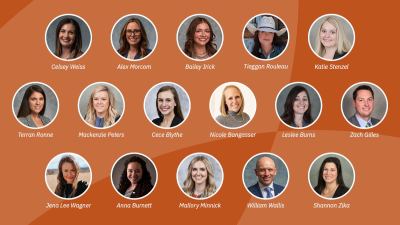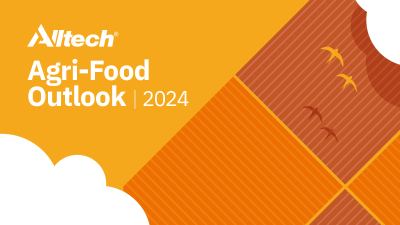Moocall: Successful calving & sleep!

To listen to our entire conversation with Emmet, click on the player.
Tom: Emmet Savage is co-founder of Moocall, one of the 10 finalists in The Pearse Lyons Accelerator program and one of two out of Ireland. He has founded numerous companies in the construction, demolition and fashion sectors. Moocall, however, is quite different from all those. And, under Savage’s leadership, the Moocall team has expanded into 38 countries in 28 months. Thanks for being with us, Emmet.
Emmet: Thank you. Nice to be here, Tom.
Tom: So, what inspired this technology?
Emmet: It all came about when a guy who used to work with me on the demolition side came to me with an idea. He was a farmer’s son, and they lost a heifer and a calf, which was really a huge loss to the family both emotionally and financially. So, he had an idea that there was really something specific in the movement of the cow’s tail when she’s close to giving birth. He had done some really early stage testing on it, and then he brought it to me. I was able to put some seed capital behind it, and we proved the concept really quick. So, it was that original loss that spurred the thought process around how we could solve this problem, and Moocall was born.
Tom: Is this “tail switching” something that’s commonly known in the cattle industry?
Emmet: It would definitely be commonly known by the farmers that a tail moves in a specific way. No one had actually gone into scientifically looking at what those specific movements were. But, when we started to research the tail movements, we realized very quickly a contraction makes the tail move a specific way. So, our device measures contractions and can then accurately give a farmer an hour’s notice as to when the calf is going to be born.
Tom: Your website says, “Enjoy healthier cows and calves, more sleep and increased profits.” What is Moocall, and how does it deliver healthier cows, more profit and, above all, more sleep?
Emmet: Sure. Obviously, healthier calves are a direct result of the farmer being there when the birthing process is happening. In a lot of cases in calving, there are problems with getting the calf out, or there could be a leg back. There are all sorts of problems. At that point, if the farmer is there, he can then make a decision to intervene himself or to call the vet. So, in doing that, we’re increasing profits on farms, delivering healthier calves and helping the farmer.
And sleepless nights are something a lot of farmers will understand. They set alarm clocks every few hours to check on their herd. Most times when you’re walking down to check on the herd, there’s nothing happening. So, it’s a wasted trip, and sleep deprivation happens. With Moocall, you have it on the cow’s tail. You go to sleep soundly with the knowledge that Moocall will wake you when you need to be awakened and not unnecessarily.
Tom: Could you describe exactly what the device looks like? It slips onto the tail, correct?
Emmet: It doesn’t actually slip on. What we have is a ratchet system that you’re going to open up. You wrap it around the cow’s tail. You put the strap back through the ratchet. We put it in what we call “hand tight,” which is basically pushing the strap in, and then you give it two or three clicks of a ratchet, which tightens it onto the tail just enough to hold it in place. It’s like a turtle shell, and it’s actually designed on the concept of a turtle shell because there are no hard edges for the sensor to catch when it’s on a cow’s tail. So, it’s a turtle shell-shaped green sensor that has a little ratchet strap for attachment.
Tom: And so, it sends data to a smart device — a cellphone, an iPhone or whatever, right?
Emmet: Yeah. It sends to any phone that can receive a text message. That’s good enough to operate our device.
Tom: What if the farm is located in a weak area for cell service?
Emmet: Yeah. We’ve pretty much got around that as well. We have a roaming agreement with Vodafone, our connectivity supplier. These big telcos have lots of tier partners around the world. So, for example, in America, AT&T and a lot of other cellphone providers work with Vodafone and allow Vodafone’s internet of things (IoT) service to roam on to their services. So, in most cases, our device will roam on to another network provider because of a deal done higher up the chain with Vodafone themselves.
We’re also sending a very small piece of data. It’s not really like a text message. We gather all the data. We send it to a server in the cloud and that then sends the text message. So, when it’s a smaller piece of data, it’s easier to get out. In nearly all cases, our devices will work even with the lowest cellphone signal.
Tom: Electronics are not known to be very moisture-friendly. What if it rains?
Emmet: We have a fully watertight product. We conformal coat all our electronics inside the device, and then we have an ingress protection rating on the device as well. So, it’s fully waterproof. It can even be washed in a bucket of water. There are no problems with moisture or rain.
Tom: Can more than one of these sensors be used at the same time?
Emmet: Oh, absolutely. The unit itself is fully transferrable. We recommend one unit for every 30–40 head of cattle depending on your calving pattern. If you’re calving year-round, it might go as high as one to 60 or 70 cattle. But if you’re compact calving or really tight calving, it might go as low as one to 20. So, what we ask our farmers to do is go out, have a look at what one or two sensors will do for them, and then they make the decision themselves how many they need.
Tom: And how about accuracy?
Emmet: We’re at 95 percent accuracy across all commercial and pedigree breeds. So, it’s only that 5 percent we miss that are the really easy calvers. So, if you can imagine a really old mature cow putting out a really small heifer calf, her contractions don’t hit the levels that would be required to trigger the device. So, in that case, that’s the 5 percent, and nearly always that calf will be born quite easily without stress, anyway.
Tom: Do you consider Moocall technology an industry disruptor, and in what way?
Emmet: I think it’s a huge disruptor. When we started to research what was available to farmers in calving detection, there was very little. There were very expensive inserted probes that use a base station. These were generally $4,000–$5,000.
Then there were the old-fashion cameras, which are very expensive and only will work if the cow is facing in the right direction. They’ll never pick up an internal problem in the cow. And, obviously, the alarm clocks we mentioned earlier!
Moocall retails at $299. So, that’s very disruptive against an offering that’s more than 15 times more expensive. And we’re accurate, easy to use. People understand what we’re doing very, very quickly. So, hugely disruptive. The internal probe company that had been operating in Ireland had literally moved out within a year of us launching, and we haven’t seen them since. So, we’re obviously disrupting a little bit!
Tom: Do you have other devices under development, ready to roll out?
Emmet: We sure do. What I’m really, really excited about is, we have a product going to launch in September. It’s an IoT device again, and it will be in the heat detection and breeding management space. This device will quite simply text you when a certain cow enters her standing heat. That is hugely valuable to any farmer. Once he knows she’s in heat, he can then get his artificial insemination guy or a bull. When the cow doesn’t cycle again three weeks later, we know that she’s pregnant and the exact due date of the calf she’s having. So, all that information will be available.
The sensor is going to auto-populate the breeding management system as well, which is key for all the farmers. You will have a smartphone in your hand with all of your breeding information on it. You will have inputted none of the data. It’s all auto-populated by the sensor. We spoke about disruption a minute ago. This is equally as disruptive. The offering at the moment out there for heat detection again is base station-related and is in the region of $10,000–$15,000 for a system for 50 head of cattle. We’re going to come in one-tenth of that. And, it’s fully mobile.
So now the beef guys have a full solution. Today, they’re using tail paint and very primitive ways of measuring heat. We will give them an option to adopt high-accuracy technology at a very affordable price.
Tom: It sounds to me as though there is just a wave of technology entering the agricultural realm. Big changes.
Emmet: Huge changes. I see a lot of changes in what I call our area of expertise, IoT, the ability to use the cell phone network to transfer data back to the farmer’s phone so he can act on making informed decisions. I see it in the accelerator that I’m involved in, such as magnetic spraying that reduces drift. You magnetize the water. You break up the particles much smaller. They stick to the plants you’re trying to spray and reduce chemicals and reduce drift.
What you see in the accelerator is probably cutting-edge for what is happening, but there’s so much happening. It’s all about data. It’s all about recurring revenue. And it’s all about making the farmers’ lives easy.
Tom: And what about your work do you enjoy most?
Emmet: I just love the fact that I’m in a startup. Nothing ever goes as planned. There are so many highs and lows. You’ve got financial concerns and you’ve got staffing concerns. All these problems pop up at a minute’s notice. It’s never, you go in and you think, “Today is going to be clear. I’m going to get loads done.” But it’s that unpredictability of a startup that I love and the challenge of getting over these problems that arise on a daily basis. Keeps you on your toes!
Tom: Moocall co-founder Emmet Savage. Thank you so much for joining us.
Emmet Savage spoke at ONE: The Alltech Ideas Conference (ONE17). To hear more talks from the conference, sign up for the Alltech Idea Lab. For access, click on the button below.
















